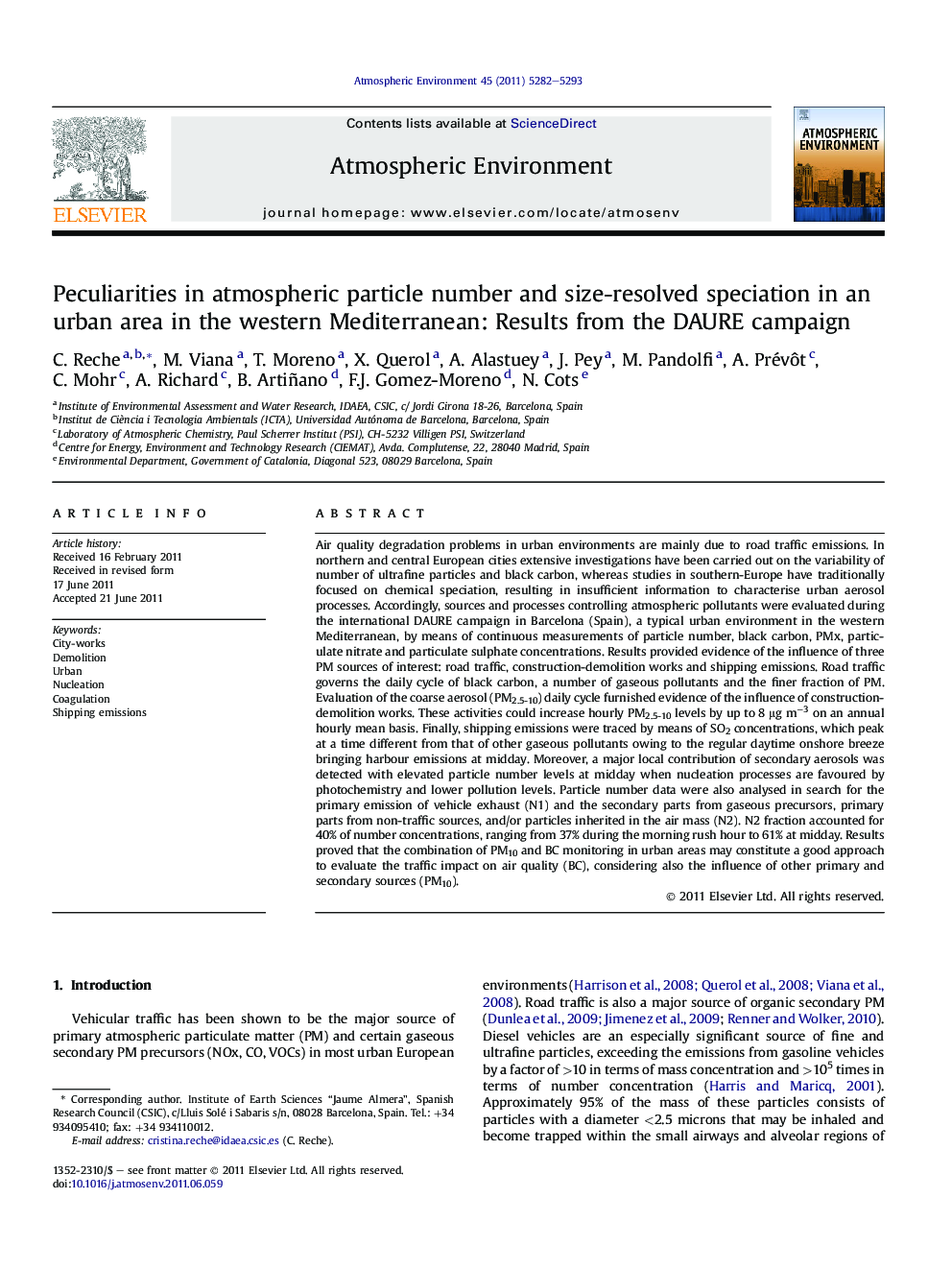| کد مقاله | کد نشریه | سال انتشار | مقاله انگلیسی | نسخه تمام متن |
|---|---|---|---|---|
| 4439439 | 1311019 | 2011 | 12 صفحه PDF | دانلود رایگان |

Air quality degradation problems in urban environments are mainly due to road traffic emissions. In northern and central European cities extensive investigations have been carried out on the variability of number of ultrafine particles and black carbon, whereas studies in southern-Europe have traditionally focused on chemical speciation, resulting in insufficient information to characterise urban aerosol processes. Accordingly, sources and processes controlling atmospheric pollutants were evaluated during the international DAURE campaign in Barcelona (Spain), a typical urban environment in the western Mediterranean, by means of continuous measurements of particle number, black carbon, PMx, particulate nitrate and particulate sulphate concentrations. Results provided evidence of the influence of three PM sources of interest: road traffic, construction-demolition works and shipping emissions. Road traffic governs the daily cycle of black carbon, a number of gaseous pollutants and the finer fraction of PM. Evaluation of the coarse aerosol (PM2.5-10) daily cycle furnished evidence of the influence of construction-demolition works. These activities could increase hourly PM2.5-10 levels by up to 8 μg m−3 on an annual hourly mean basis. Finally, shipping emissions were traced by means of SO2 concentrations, which peak at a time different from that of other gaseous pollutants owing to the regular daytime onshore breeze bringing harbour emissions at midday. Moreover, a major local contribution of secondary aerosols was detected with elevated particle number levels at midday when nucleation processes are favoured by photochemistry and lower pollution levels. Particle number data were also analysed in search for the primary emission of vehicle exhaust (N1) and the secondary parts from gaseous precursors, primary parts from non-traffic sources, and/or particles inherited in the air mass (N2). N2 fraction accounted for 40% of number concentrations, ranging from 37% during the morning rush hour to 61% at midday. Results proved that the combination of PM10 and BC monitoring in urban areas may constitute a good approach to evaluate the traffic impact on air quality (BC), considering also the influence of other primary and secondary sources (PM10).
► We described the PM sources influencing a typical urban environment in the Mediterranean.
► Road traffic governs the daily cycle of black carbon, CO, NOx and the finer fraction of PM.
► Construction-demolition works increased hourly PM2.5-10 levels to 8 g m−3 on an hourly basis.
► Shipping emissions were traced by means of the daily cycle of SO2.
► We detected a major local contribution of secondary particles, very significant at midday.
Journal: Atmospheric Environment - Volume 45, Issue 30, September 2011, Pages 5282–5293